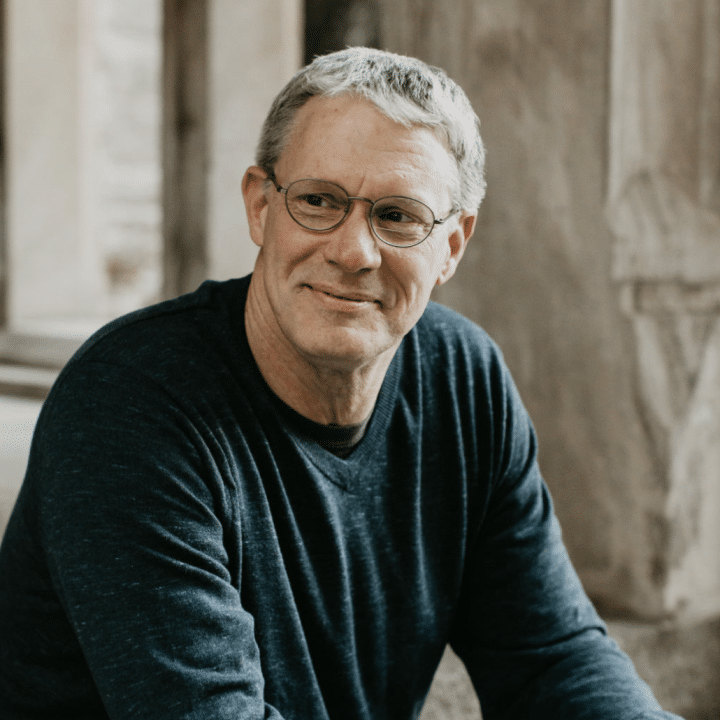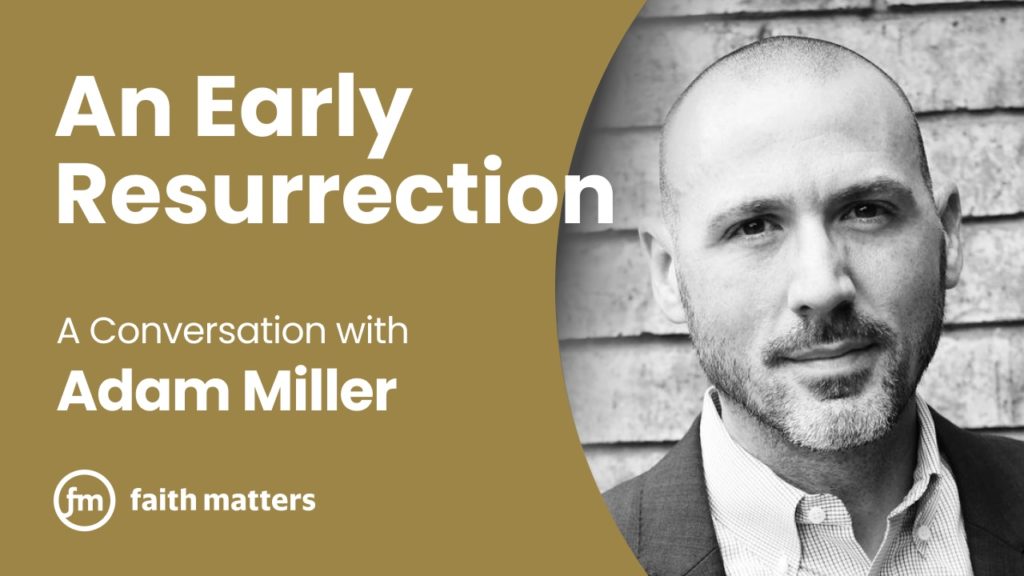“If you only prayed more, fasted more, read more, obeyed more, then you’d feel different…”
“Sigh” (goes the person struggling) “I kind of feel like I have done that…”
And that’s where the conversation sometimes ends. What more is there to talk about? You tried all that…and it just didn’t do it for you, right?
Similar things are sometimes said by those facing other significant challenges, including depression/anxiety or marriage problems, “Oh, we tried all that…it’s not like more prayer and scripture reading is going to make this go away…”
No, it won’t. Because that’s not how prayer “works” (or the brain, for that matter). Faith practices are not a salve we put on things to make them more like we want them to be. Yet sometimes in our on-demand society, we almost cannot help but think and act as if that’s how, well, pretty much everything should be (including our spiritual life).
And perhaps unsurprisingly, when some aspect of our worship doesn’t evoke the feeling or experience we want, we can turn away in frustration like we would from a malfunctioning smartphone…“why waste my time on this useless gadget anymore? Is it time for an upgrade?”
Then, we stop praying….or reading…or worshipping with brothers and sisters—maybe going off in search for something better. And just like that, we might be cutting ourselves off from some important ways God wants to keep working in our lives.
That won’t stop Him, of course, but it might be harder for us to be reached, taught and supported.
Another option. What if we tried approaching this whole thing differently? Rather than relating to our faith practices as “things to do” or “get done” or “use” in order to achieve some better state and feel what we want to feel (or pushing away what we don’t want to feel), what if we experimented with this: Approaching every faith practice as a chance to stop, pause and intentionally bring a moment of silence and stillness into our lives—interrupting whatever relentless patterns of automatic activity are happening in our minds, bodies and schedules.
That, by the way, is essentially the core of what we teach students to practice in our Mindfulness-based Stress Reduction classes (developed by Jon Kabat-Zinn thirty years ago at the University of Massachusetts—and taught all over the world). In both cases, this intentional pause can become a chance to open ourselves to whatever is going on—really going on—in our lives.
That’s not so easy to discern for any of us, of course, which is why it can be so helpful to persist in resting our attention on some aspect of our experience for even longer—breath, body, thoughts, emotions, sounds—until our awareness clarifies.((Thomas McConkie’s online essentials class is one of my favorites to recommend for beginners. And if you’re looking for something in person, Mindfulness-based Stress Reduction classes are available everywhere in America—and all around the world (here’s a place to find them in Utah, along with many other local resources).)) That’s what meditation is; and as many Latter-day Saint meditators have found, it’s a practice that is both helpful and most often complementary to our Christian commitments and beliefs.

Excuses to stop. While the benefits of stand-alone meditation are clear, imagine what this kind of mindful awareness could mean as a starting point for prayer. After settling long enough to notice what’s really going on in our lives, we then turn our attention to God. Rather than only trying to say the right words or feel the right feelings, we invite Father to meet us in the full reality of our current circumstances.((Mediated by the Son helping us and the Holy Spirit guiding us.)) Now, we’ve got a real conversation on our hands!
We don’t even get there most of the time (let’s be honest) because we can be so darn efficient in getting through prayer or study that it’s hard to deeply sense what God’s mind or feelings are…let alone our own!
But, again, that’s the brilliance of mindfulness, which Dr. Kabat-Zinn defines as “paying attention in the present moment, non-judgmentally, on purpose—as if your life depended on it”. ((Full Catastrophe Living: Using the Wisdom of Your Body and Mind to Face Stress, Pain, and Illness, New York: Bantam Books, 1990, xxxvii)) Another good one from Lou Bean, one of my earliest teachers, is “conscious affectionate awareness of the moment.”
This kind of presence and attention is increasingly hard for any of us to experience in a society where our pace of life continues to measurably accelerate.((See Carl Honoré’s “In Praise of Slowness: Challenging the Cult of Speed”)) What can we do to stabilize this unsettling pace on a personal level—or neutralize its corrosive influence in our lives?
Tapping our own native mindfulness. Although meditation and yoga are the two most prominent ways to cultivate mindfulness, they’re clearly not the only ones. Many have pointed out ways in which art, writing, walking, or nature, for instance, can help deeply cultivate attentiveness. And there are at least thirty different practices already built into the Latter-day Saint lifestyle that could become sites for rich mindfulness practice.((In addition to the obvious ones (communing in prayer, feasting on scripture, worshiping in the temple or at church, resting on the Sabbath), there are many less obvious opportunities for collective contemplation in our regular practice of faith (gathering for Conference, counseling with a council, ministering to someone in need, gathering for family dinner, holding Family Home Evening, singing in primary—100 kids sitting down and mostly focusing their attention, are you serious?) Ordinances and blessings can also become sites of deep contemplation and mindfulness.))
As mentioned already, rather than just “saying a prayer” (and getting it done), imagine approaching this personal communion as a chance to stop long enough to watch the internal contents of our hearts and minds as we commune in God’s presence. And rather than getting lost in what’s “okay to do or not to do” on the Sabbath, how would it be to push back on life’s momentum enough to experience a legitimate, mindful retreat once a weekend—allowing us to spend more sustained time in stillness, silence and communion with all we love (including our family and God).
Likewise, while acknowledging the importance of participating in sacred ordinances, what if our experience of temple worship went beyond “getting a name or session done” to a deeper relishing of the “non-doing” element of being able to step away from the busyness of our normal lives? How would that change our temple or Sabbath or prayer (or any of the other faith practices in our community)?
For me, this has made the Sabbath more refreshing, prayer more contemplative, scripture-stoppage-time much more of a relief, and the temple a genuine haven (try agreeing with others to drive there in silence as a way to prepare the mind for deeper contemplation).

Sacred precedents. As inspiration for these kinds of adjustments, credit ought to be given not only to the remarkable mindfulness teachers over millennia of Eastern traditions, but also to contemplative thinkers in many Christian faiths who have shared interest in these kinds of questions for just as long (my favorites: Henri Nouwen, Thomas Keating and Cynthia Bourgeault).
That goes all the way back to Jesus Himself—who had a practice of retreating regularly to be with Abba in stillness. Immediately after the death of John the Baptist, for instance, Jesus withdrew Himself from the disciples and traveled “privately” unto a place variously translated as “solitary,” “secluded,” or “deserted” (Mark 6:32).((Including the New International Version, International Standard Version, and New American Standard Bible.))
Many prophets through our own sacred history have also demonstrated and taught the power of deeper contemplation and stillness—from Joseph Smith to David O. McKay and Gordon B. Hinckley. On one occasion, for example, President Hinckely said:
We live in a very mad world when all is said and done. The pressures are tremendous. We fly at high speeds. We drive at high speeds. We program ourselves. . . . But there is hardly time to reflect and think and pause and meditate. I daresay that most of those in this room today have not taken an hour in the last year to just sit down quietly, each [one individually] . . . reflecting upon his place in this world, upon his destiny, upon his capacity to do good, upon his mission to make some changes for good. We need to. I recall so vividly President McKay in his old age in a meeting with his counselors and the Twelve saying, “Brethren, we do not spend enough time meditating.
“I believe that with all my heart,” President Hinckley added, while also acknowledging, “Your needs and your tastes along these lines will vary with your age. But all of us need some of it.”((Most of this quote comes from Teachings of Gordon B. Hinckley (Salt Lake City: Deseret Book, 1997), 334), except for President McKay’s specific counsel, which comes from a later version of the account in a 1999 First Presidency Message (“Life’s Obligations,” Ensign, February 1999), in which President Hinckley added the other line.))
How’s that for a mindfulness endorsement, fellow trying-to-be-Saints?!
Sure, there are certain strains of meditation and eastern doctrines that are not compatible with prophetic teaching. But there is much that is good and edifying. It was Joseph Smith who taught “one of the grand fundamental principles” of our faith is “to receive truth, let it come from whence it may,”—encouraging the Saints to “gather all the good and true principles in the world and treasure them up” as a part of the Restoration.((Joseph Fielding Smith, comp., Teachings of the Prophet Joseph Smith (Salt Lake City, UT: Deseret Book, 1976), 316.))
Although we may use different language than our Buddhist brothers and sisters, it seems clear we’re pointing in our faith tradition to some of the same benefits of settling the mind, stilling the heart and making enough space in our lives to experience the divinity all around us.
In the absence of that, it can be hard for any of us to feel God’s presence.
No more room. I’ve honestly begun to wonder if that’s the only thing that needs to happen to get many of us cut off from the “still,” “small,” and sweet influence of God: just get us too darn stressed and busy that our minds don’t have room for anything else.
And without that felt experience of God in worship to at least some degree, ask yourself honestly: why would people stick around?
With so many other options for immediate relief and promised “transcendence” out there, it’s not hard to see why some go off elsewhere.
That might be a real temptation for any of us, if we can’t find legitimate peace or joy or love in the gospel. That’s why it’s so crucial for any of us to learn to stop—long enough to make sure we’re not missing the sweetness that arguably can sometimes only be found in the stillness.
In the absence of that, we may end up walking away not from “the church”….but from an impoverished experience of the church and gospel.
The richness we’re missing may be right under the surface.
Co-authored by Jacob Hess, Carrie Skarda, Kyle Anderson, and Ty Mansfield, their forthcoming book, “The Power of Stillness: Mindful Living for Latter-day Saints” will be available January 1, 2020 (Deseret Book). Visit MindfulSaints.org to learn more.
Find more resources on incorporating mindfulness, meditation, and stillness in your worship and spiritual practices from Faith Matters:
How Stillness Can Help Us Find God
Waking Up, Growing Up – A Deep Dive with Thomas Wirthlin McConkie



